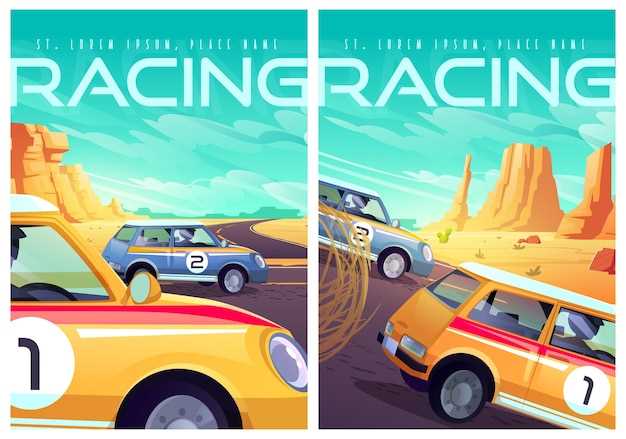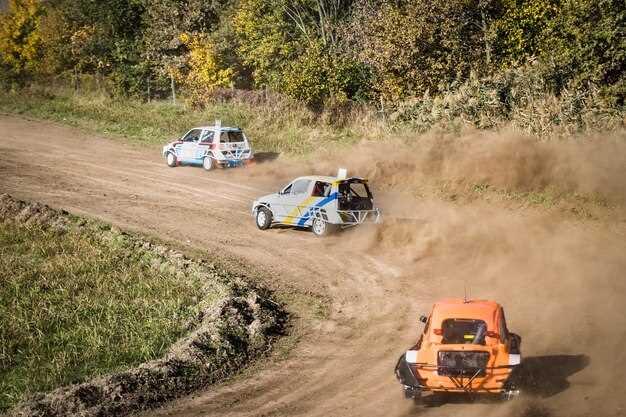
Rally racing is a thrilling motorsport that takes drivers through various terrains across multiple stages. Each stage presents unique challenges, testing not only the speed and skill of the driver but also the performance and durability of the vehicle. Among numerous championships, the World Rally Championship (WRC) stands as the pinnacle of rally racing, attracting talent from around the globe.
The WRC features a diverse array of events, ranging from snow-covered roads in Sweden to the rocky landscapes of Australia. Each rally is divided into stages, where competitors battle against the clock and each other. Understanding the intricacies of these championships is essential for rally enthusiasts and motorsport fans alike. This article delves into the iconic rally championships that have shaped the sport and left a lasting legacy on both drivers and their fans.
Understanding the Structure and Points System of WRC
The World Rally Championship (WRC) is structured around a series of events known as rallies, which take place over various surfaces, including gravel, tarmac, and snow. Each rally consists of multiple stages where competitors drive against the clock. The goal is to cover the distance in the shortest time possible, with penalties applied for various infractions such as time delays or off-road excursions.
Each rally comprises a mix of special stages and driving over public roads, making it a combination of speed, navigation, and endurance. The overall duration can range from two to four days, depending on the event, with each stage designed to challenge teams and drivers in unique ways. Stages generally vary in length and difficulty, requiring a high level of skill and strategy from participants.
The points system in WRC is designed to reward consistency and performance throughout the season. Drivers and teams accumulate points based on their finishing positions in each rally. The winner of a rally typically receives 25 points, while the second place gets 18 points, and it continues down to the top ten finishers, with decreasing points awarded. Additionally, a bonus point is awarded to the driver who sets the fastest time in each stage, encouraging competitive spirit and aiming for speed.
At the end of the season, points are tallied to determine the champion in both the drivers’ and manufacturers’ categories. This structure not only emphasizes individual skill but also highlights teamwork and vehicle performance, making WRC a comprehensive test of rallying prowess.
Exploring the Most Challenging Rally Stages Worldwide

The world of rally racing is filled with stages that test the limits of drivers and their machines. Among the various competitions, the World Rally Championship (WRC) showcases some of the most iconic and difficult rally stages globally. These stages present unique challenges due to their terrain, weather conditions, and technical requirements.
One of the most notorious rally stages is the “Col de Turini” in Monte Carlo, renowned for its treacherous twists and turns. Competitors face narrow roads bordered by cliffs, making precision steering essential. The unpredictable weather can turn a sunny day into a snowstorm, adding to the stage’s difficulty.
Another standout is the “Safari Rally” in Kenya, famous for its endurance-testing routes that navigate through rough and wild landscapes. The unpredictable terrain includes rocky paths and deep mud, which not only challenges grip but also tests the durability of vehicles over long distances.
The “Acropolis Rally” in Greece is another stage that continues to hold a formidable reputation. Its rugged terrain and loose gravel roads make traction a major concern. The heat and dust further complicate the experience, demanding stamina and exceptional driving skills from participants.
Moreover, the “Rally Argentina” stage features a mix of high-speed passages and tight corners, often with elevation changes. The combination of fast-moving sections with technical challenges provides an exhilarating experience for both drivers and spectators.
Finally, the “Rally Finland,” known as the ‘Land of a Thousand Lakes,’ is famous for its fast gravel roads and jumps. The stages here often resemble a rollercoaster, allowing drivers to showcase their speed while managing breathtaking air time and landings.
These rally stages not only highlight the physical challenges inherent in the sport but also underline the skill and bravery required to compete at the highest level within the WRC. Mastering these iconic stages is a testament to a rally driver’s prowess and determination.
The Evolution of Rally Cars in Championship History

The evolution of rally cars has significantly shaped the landscape of motorsport, particularly within prestigious championship arenas like the WRC (World Rally Championship). From their inception, rally cars have undergone remarkable transformations in design, technology, and performance, reflecting the demanding nature of various rally stages.
In the early days of rallying, cars were primarily modified production vehicles. Manufacturers such as Ford and Volkswagen dominated the scene with models like the Ford Escort and the Beetle. These cars were relatively simple and relied heavily on driver skill to navigate diverse terrains and weather conditions.
As the WRC gained popularity in the 1980s, the introduction of Group B vehicles revolutionized the rally car segment. These powerful machines, featuring turbocharged engines and lightweight materials, changed the dynamics of rally stages. The legendary Audi Quattro, with its all-wheel-drive system, set new performance benchmarks, enabling drivers to tackle challenging courses with unprecedented speed and agility.
However, the excitement of Group B came at a price, leading to the category’s eventual ban due to safety concerns. The 1990s saw the emergence of Group A regulations, which emphasized a balance between performance and safety. Cars like the Subaru Impreza and the Mitsubishi Lancer Evolution showcased advanced technology such as active differentials and sophisticated suspension systems, allowing them to master various rally stages across global terrains.
The turn of the millennium brought about further advancements with the introduction of super 2000 and World Rally Car specifications. These rally cars combined the power of turbocharged engines with enhanced aerodynamics and safety features, facilitating faster stage times while also boosting driver confidence. As the WRC continued to evolve, manufacturers invested heavily in research and development to stay competitive, resulting in innovations like hybrid powertrains and advanced telemetry systems.
Today, rally cars are a perfect amalgamation of high-performance engineering and cutting-edge technology. With the continuous evolution of materials and design methodologies, modern rally vehicles are lighter, faster, and more agile than their predecessors. Each championship season showcases vehicles that not only navigate the thrilling stages but also push the boundaries of what is possible in motorsport.



